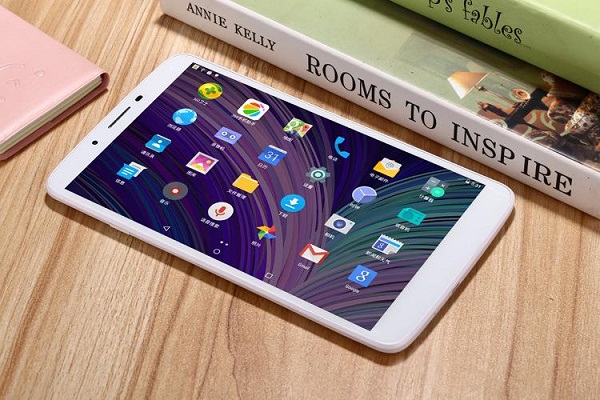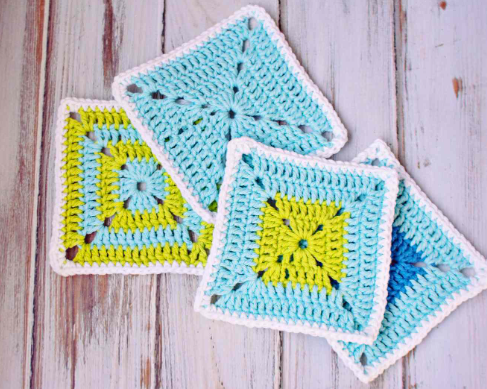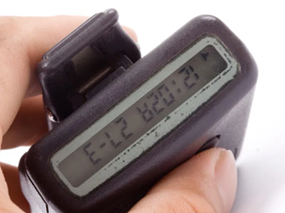The tablets are consolidated as the mobile device for personal entertainment and professional fields where it is not necessary to have the power of a laptop. This month we review those proposals come with large screens and governed by the operating system of Google.
Most striking is that the market is maturing; consumers are beginning to be aware of what allows a tablet, and the change of mind, which is compared to a conventional computer. Above all, they see how the offer is adapting to the real needs of people.
In addition, in between we have seen the launch of the new iPad, as we contemplate the iOS ecosystem maintains a controlled pace of innovation and the Android universe is exploding. Since the arrival of its version 3 (Honeycomb) last year and 4 in the same 2012 (that gradually will see in the tablets on sale), this platform has gained momentum in the market for tablets at all levels to lead it for the next time.

The Android paradigm
And, although it is true that Apple with its iPad iOS has garnered a success of sales, as shown by the figures year after year, Android is making gain a foothold as it did in the world of smartphones . His most powerful trump card is to be free software and, therefore, free and open to manufacturers to improve it and adapt to their devices without too much trouble. In addition, Android is making many firms can offer tablets below 200 €, a figure far even the cheapest iPad. Such a fall in prices, that is enabling a critical mass of consumers make a tablet, beginning its real expansion and popularization.
In parallel, it seems that many of the problems that originally suffered Android are resolved: from app stores to an excessive variety of platforms and implementations of low quality. Little by little, we finding that the market applications Google (Google Play) significantly improves. Brings more and more applications and, in general, the quality of these is increasing.
Yet this is a very clear conclusion: Android will be the operating system of reference on mobile devices in the coming years. Apple will continue sweeping sales (and profitability), but the bulk of the market, especially in low models and media, will be led by Android. In addition, this with permission from Microsoft and its Windows 8, which still has everything to prove in the field of tablets. In fact, preliminary prototypes we’ve seen look good and the Metro interface promises a lot, but this at the expense of tablets with much more powerful than needed to move Android hardware. Result: predictably more expensive, heavier, less autonomy and typical drawbacks of a laptop as heat dissipation units.
The importance of hardware
A tale of hardware, it is important to explain a general section that generates considerable confusion: the CPUs of the tablets. Although generally are the forgotten ones when choosing one of these devices (you look more on the screen or internal storage), the processor of each model is what makes the quality of the experience of using a tablet and, ultimately, what we feel comfortable handling them.
At present, the most widespread are the architecture of ARM processors, a company that licenses its models to companies like Apple, NVIDIA, Samsung and Texas Instruments for the making, and even improve.
Unless Apple (which only occurs for iPad / iPhone) and NVIDIA that integrates its own graphics engine under the trade name Tegra and dual – core version, usually we will see how the tablets mounted processors Cortex A8 or A9 (those of ARM itself). Logically the A9 is more powerful than the A8, appearing sometimes at speeds above 1 GHz, the magic figure around which most of the models move.
In any case, and focus the subject, from models that mount the ARM A9 at 1 GHz, we can talk about fairly fast CPUs that allow us to use experience and ability to execute certain level applications without problems. Above, we have solutions like NVIDIA and Tegra 2 (dual – core A9) or Tegra 3 (quad core). The latter, in addition to considerably vitamin computing power with multicore CPUs, have a higher performance graphics engine that will be ideal if we are to use the tablet to play.
User experience, the key
In the previous section, we have insisted on the user experience because, really, is what makes the difference between a useful tablet and a nice paperweight. A fast CPU and at least 1 Gbyte of RAM are not only to boot faster applications (which in most cases are relatively light) but are very important to enjoy unfettered two of the most typical uses: web browsing and playback of multimedia content.
In the case of web browsing, do not forget that one of the strengths of Android (unlike iOS / iPad) is its compatibility with Flash content. The problem is that upload and browses through the page of any newspaper with ads or Flash elements with some powerful tablet can be a frustrating task. Not only because take longer to load, but because the move with your finger along the screen or expand certain areas, we see that there are delays, traffic jams and lack of fluency. The same operation performed with a strong team will be much more fluid and comfortable, enhancing the feeling of use and making navigation with something much more natural finger.
Still, none of the models analyzed wins from a very subjective point of view, to use the experience iPad / iOS offers in areas such as web browsing. In this sense, the iPad is optimized to the maximum, but in return is not as compatible as the browser of any PC. It is a topic that Android has come a long way since the first versions and where probably continued to insist in the near future.
The screen, the obvious
Entering more tangible aspects naked eye, another key aspect when buying a tablet is the screen. The first decisive factor is the size, but it is also very important to check the quality, finish, and precision of the screen itself. Sometimes it can be difficult to prove; but if we have the chance to touch the product before buying it worth writing something to check the accuracy when using the onscreen keyboard or review how the web browser moves when we move along a page finger.
The reason is that although thankfully the touch technology of most of these devices is already capacitive (which allows multiple finger gestures), there are noticeable differences between manufacturers and others. For example, you can check some screens are not very precise when tapping on small areas and, above all, how the coating of the screen affects the user experience. A treated glass technologies such as Gorilla Glass (high resistance), provides better feel and allows the finger to slide smoothly without jumping or jams, making their use more comfortable. Moreover, in these cases, we are talking about much less sensitive to fingerprints and dirt screens.
Finally, the backlight also plays a big role. Usually mid – range models onwards provide a reasonable brightness for a wide range of environments, although there are considerable disparities between some manufacturers and others (as well we have seen in comparative). Is not usual to use the tablet in full sun, but under the circumstances, we find models whose backlight make use in these conditions almost impossible while with others it is perfectly possible. Therefore, if we can see the teams live and play around with it to check these details, the better.
Three large groups according to the screen size
When choosing a tablet based on Android, we may have many questions to decide on a screen size or another, since the model range is quite wide. In general, we can build on expectations of use and fit different models in 3 groups.
On the one hand, we would have the tablets pocket with screens from 5 to 7″and on which we are already preparing a comparative. Such tablets are ideal for those looking for a compact device to carry around everywhere and intended primarily to check email / social networks, run applications positioning / guided play music / video, etc. Volume, usually in small spaces, jacket, and its smaller screen also manages to improve the autonomy of use. They would be the alternative to smartphones, albeit with a larger and more comfortable for when we are away from the home screen.
The next segment would be the models 8 and 9″ we might consider the standard. These models are the most versatile, they allow surfing the Internet, reading e – books or watch movies comfortably while not usually too big to take them on time with us everywhere. Therefore, if our priority is not the minimum size, they are the most logical for anyone looking for a tablet for all kinds of tasks choice.
? The last group consists of units of 10″, although actually would be valid also as tablets versatile, their larger screen sizes make them ideal to have them at home or the office (move them less), and use them mainly to enjoy video, photos, web browsing or any task where the screen size is relevant. They also have higher resolution (usually 1,280 x 800), so that the resulting graph and reading websites / books is somewhat more defined than with smaller models.
The manufacturer touch
Finally, and before entering thoroughly into testing and comparison of the tablets analyzed, we would like to emphasize an issue that is very important when buying a model another. Beyond factors such as the quality of the housing or hardware, it is interesting to look at the work done by the manufacturer with the software and, above all, what version of Android includes and whether it will be upgradeable. In addition, the total freedom of Android can be a problem: to be the manufacturers themselves who collect and offer their users the updates for their tablets and, while they decide how much care the interface and the provision of software factory installed.
From version 3 of Android (Honeycomb), specifically designed for tablets, the issue of the interface is less important, but the staffing software itself is an issue that needs attention and, above all, make sure we have access to the market of Google. Not a manufacturer offers this possibility and although always can install applications from the file by hand himself, is an added complexity that we should avoid.
Meet tests conducted by PCA Lab
Then we explain the entire methodology of analysis carried out with tablets tested in the laboratory, and the different tests carried out to check their level of features and performance. Of course, first of all, we want to clarify that test the tablets is not an easy task because, on the one hand, it is more closed platforms and less likely than PCs and secondly, most of the benchmarks available today are usually purely synthetic. This implies that performance figures that we get are numbers that do not always have a correct equivalence working with real applications and performing common tasks. It is true that this kind of figures allows comparisons between equals, but may also obtain conflicting results or is not always realistic.
Moreover, unlike what happens in the PC world with tests like 3DMark or PCMark, for now, there are no de facto standards that establish rankings of performance more or less realistic between different products and configurations over time. The rankings are determined suites with performance and, as we have explained above, the figures must be taken as a guideline.
Selected tests
Given this situation as a starting point, at the Laboratory we decided to focus on choosing no more than two test suites, on the premises that were able to measure the performance of the tablets in different areas but giving an easily comparable overall index and, above all, that it were free trials that any reader may download and install on your device to compare the results with the products analyzed in this comparison.
Among all available options, and after verifying the compatibility of different solutions, we chose to focus on Quadrant and AnTuTu. The first divides its tests in measuring the performance of the CPU (arithmetic operations, handling XML and multimedia coding), memory (the RAM performance by moving data), I / O (yield accessing files and operations in databases) and 2D / 3D.
In the case of AnTuTu, we find a widely used by laboratories around the world in the suite measuring the performance of Android systems were basically the same tests as in the previous suite, although the possibility of adding some offers are made extra functions as the measurement of battery life. This supplement, also free, keeps the active tablet (without allowing the screen to idle) making it CPU tasks and data movement steadily, although varying the CPU load to simulate a fairly realistic environment where at times the CPU has to process large amounts of data, but also spends a lot of time waiting. Under these conditions, it is becoming different stage races until the power of the device and provides a final score. The higher the figure, the greater autonomy. For you as a reference, above 900 points, we would be talking about 8-10 hours of battery life in real average use; to 700 points, about 6-7 hours; and 400 points, about 3-4 hours of actual average range.
Beyond the numbers
Finally, as not all tests in the laboratory have also spent a few hours using each tablet and checking its operation very real situations. Thus, it valued the quality of the display under different lighting conditions, and the heat dissipation to detect possible problems with a particular model. Likewise, we install different applications to see how the tablet behaves, we reproduce video / audio, take pictures in different lighting conditions for models integrating camera and, of course, we appreciate the touch that offers the screen, outer casing, and buttons.
For the test environment, we choose to restart all equipment to its factory state with a completely clean install and use an access point 802.11 g / n to record the performance and quality of its WiFi with two wireless standards used today.




